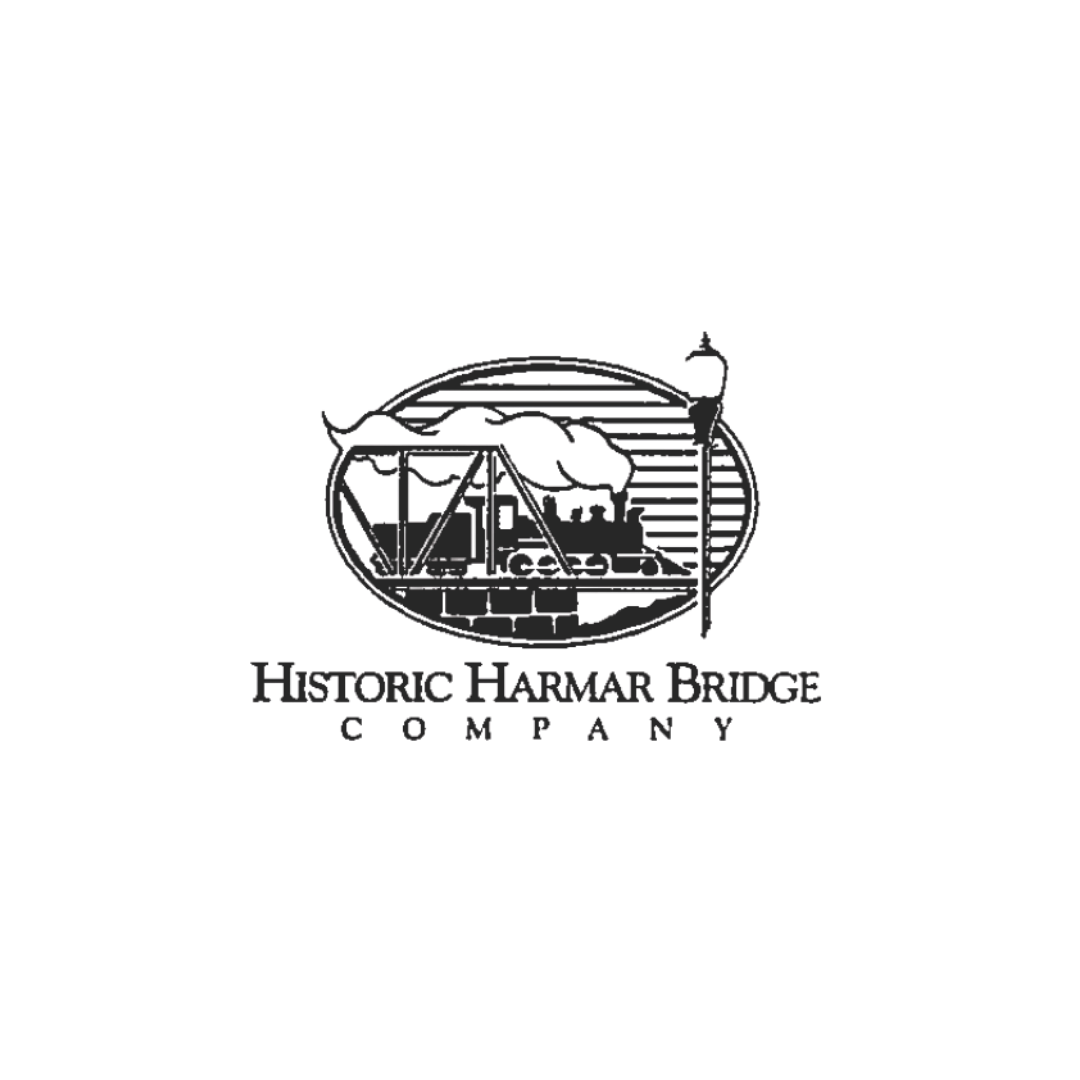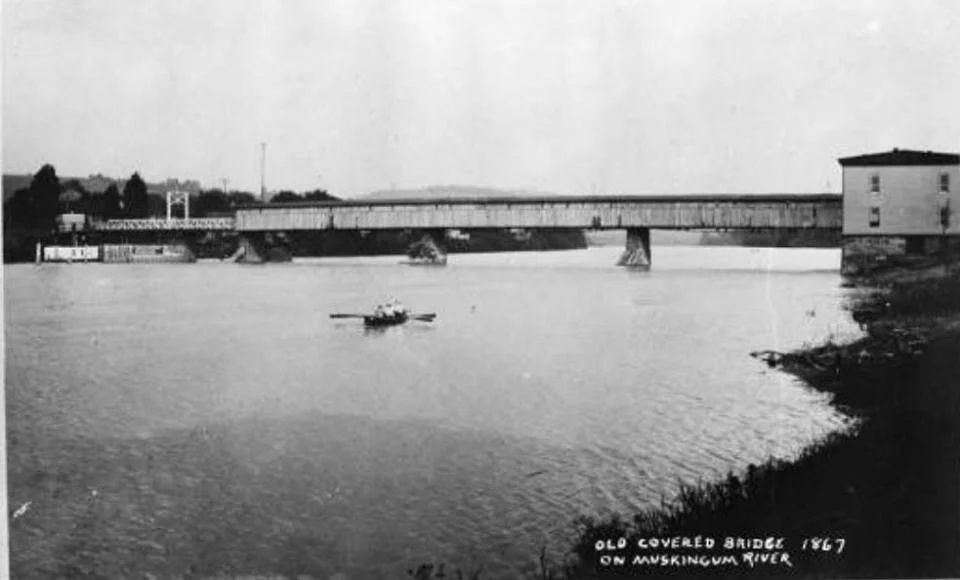“The bridge brought commerce and residents together. The bridge itself had an integral part in Marietta’s growth and prosperity while promoting both river and railroad traffic.”
- Chuck Swaney, Former Historic Harmar Bridge Company Board President
Built in 1856
Before Marietta was established in 1788, there was Fort Harmar, built three years earlier on the west bank of the Muskingum. It didn’t take long for settlers to populate the area close to the fort, and over the next decade the fort gave way to the expansion of Marietta on both sides of the river. Although Marietta encompassed both east and west banks, the “west side” kept its identity as Harmar Village or simply Harmar. As the city grew so did the need for a direct route between Marietta and Harmar and in 1856 a covered bridge was built.
Joining East & West
Set on massive piers built of local sandstone and spanning nearly 900 feet, the covered wagon bridge joined the divided banks of the city and made life easier for its residents. But it wasn’t long until a new mode of travel chugged its way into the landscape, and the countryside was soon tattooed with railroad tracks.
A Transformation
In 1873 the B & O Railroad took over the Harmar Bridge and replaced the covered structure with tracks. The span was actually four sections, and one of those sections could rotate, or swing open. The river was still busy with boats and steamers, some too large to travel beneath the railroad bridge. The solution was to have one section of the spans swing wide, turned by a huge gear mechanism at the midpoint of the section. A giant metal “key” with an attached crossbar was fitted into the mechanism. A group of men would push the crossbar counter clockwise, working in unison as the span swung open, which is how this section still operates, today.
High Waters
More than once, a deluge of floodwaters from the Muskingum and Ohio Rivers damaged the bridge, completely destroying the three stationary sections in 1913. But the piers ultimately survived, and the bridge was rebuilt by local union workers out of the National Labors Union Building 639 and continued to serve the railroad company until it was abandoned in the 1960s and then eventually donated to the Historic Harmar Bridge Company. That meant the Company was the proud owner of the oldest swinging railroad bridge in the country and the only one still in operation.
A New Purpose
Converting it to a pedestrian bridge seemed the perfect use for such a historic structure. In the 1980s, the pedestrian walkway was added to the original rail structure, providing a scenic walk the entire length.
History from “Suspended in Time” by Laura Pytlik originally published in 2015.





